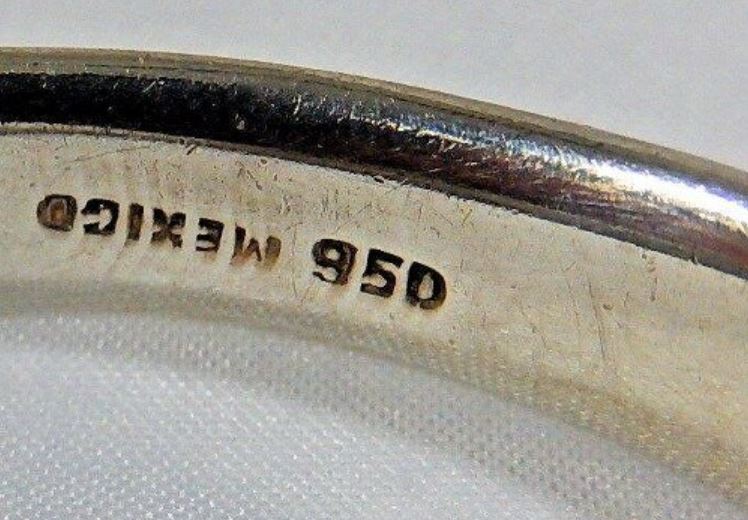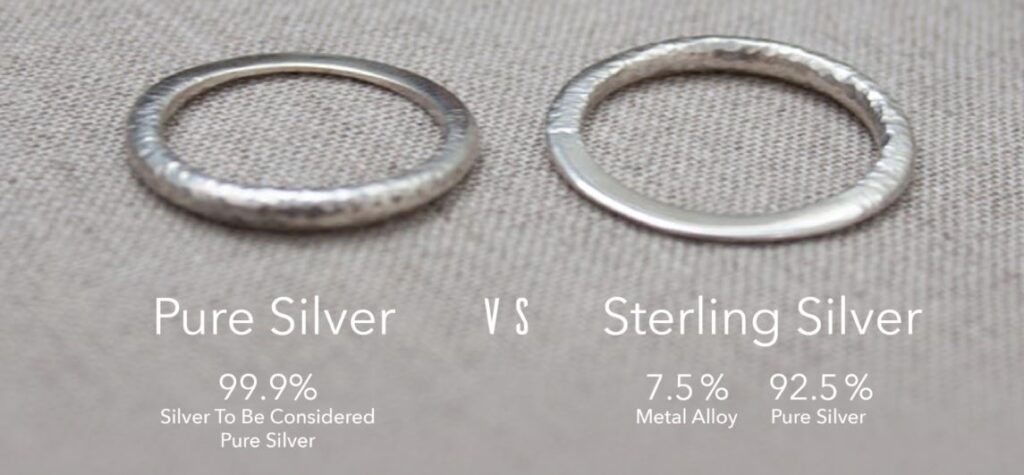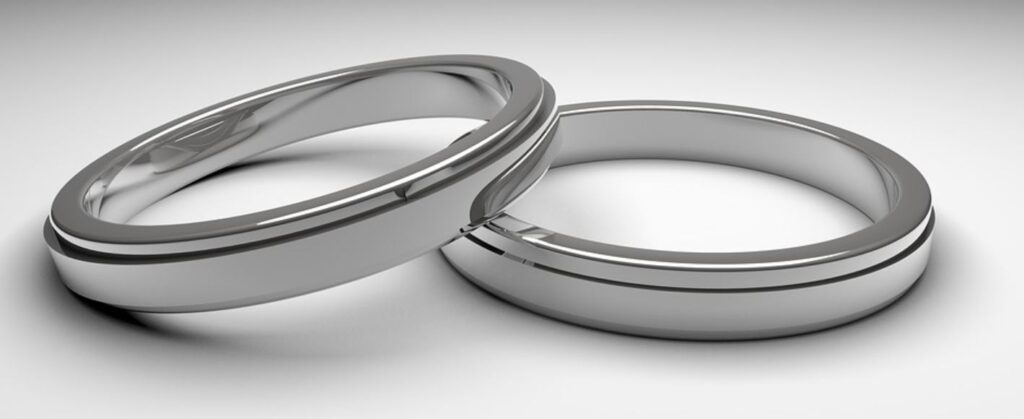950 Silver vs 925 Silver
The debate of 950 silver vs 925 silver can become a bit more trickier than one might think. In this article we’ll do a detailed comparison of 950 silver vs 925 silver including their properties, usage, pros and cons, and what to buy.
What is 950 Silver
950 silver or 950 sterling silver is a popular silver alloy used in silver jewelry. Its composition includes 95% silver and 5% copper. Main reason for copper’s addition is to increase overall durability and stiffness of the metal. It is also called as “plata 950” or simply “silver 950“.
Sometimes it may also be referred as Mexican silver but that term is often due to misconception. They are not the same.
950 silver is commonly used in a number of jewelry items including necklaces, earrings, and anklets. One more thing one has to note here is that it is often termed as a type of sterling silver which is wrong. It is a different type of silver not related to sterling silver.

What is 925 Silver
925 silver is the most widely used silver alloy in jewelry making across the globe. It is made up of 92.5% silver and 7.5% copper. This combination of silver with copper delivers an optimum balance between durability and strength. Overall it results in longer shelf life of the metal. That’s why 925 silver is more resistant towards scratches and dents compared to 950 silver.
Other names for this type of silver are “s925 silver”, or simply “sterling silver“.

950 Silver vs 925 Silver : A Full-on Comparison
Here is a full of comparison in between the two types of silver alloys.
1. Appearance
The appearance of both types of silver is nearly same but if you give it a closer look, 950 silver will give a more shinier and whitish look due to higher silver percentage. It offers a distinctive shine and brilliance that is more pronounced than lower-purity silver alloys. This enhanced aesthetic appeal makes it a preferred choice for luxury and statement pieces.
On the other hand, 925 silver is not that bad for a challenge and can fight equally good for overall appearance test.
2. Durability
Durability is a strong aspect of both of these metals. As silver is a soft metal itself, alloys with higher silver percentages are generally softer and more prone to external damages. Silver types like 950 silver find it harder to withstand damages like scratches, dents and dinging etc. In order to save it, you will have to save your jewelry from such damages leading to more care to be taken.
Since 925 silver contains a greater percentage of copper/nickel, it is harder and resistant towards damages like scratches and dinging making it more durable of the two. But it does not mean that 925 silver does not scratch at all. It will scratch but not as much as 950 silver.
3. Versatility in Design
So the logic of versatility in designs goes like this. Harder a metal is, better is to do processes like casting, soldering, and engraving leading to more versatility in designs and customization options.
Since 925 silver is the harder of the two, it offers a better range of designs and customization options to buyers. Processes like stone settings become much easier compared to 950 sterling silver. This enables jewelry makers overcome material limitations and be more focused on creating intriguing and detailed designs.
950 silver can also be used for complex designs but has its own limitations compared to 925 silver.
4. Purity
When it comes to the level of purity, 950 silver wins the race. It has a better purity level (95% silver) compared to 92.5% of 925 silver. This greater purity level gives 950 silver a brighter lustrous color. Though some people might not consider this factor a lot as they only look for the overall appearance.
5. Hypoallergenic Properties
Silver is generally considered hypoallergenic, meaning it is less likely to cause allergic reactions. However, the presence of other metals in silver alloys can sometimes lead to skin sensitivities like allergies or skin turning colored. With 950 silver, the higher percentage of pure silver (95%) reduces the likelihood of allergic reactions, making it a suitable choice for those with sensitive skin.
On the other hand, 925 sterling silver can cause skin allergies occasionally due to nickel presence. Anyone having sensitive skin must avoid 925 sterling silver or at least one which has nickel in it.
6. Market Availability
925 sterling silver can be bought and sold at almost every jewelry store dealing in silver jewelry. This is mainly due to easiness of handling and craftmanship when dealing with it. This easiness of buying silver jewelry makes overall trading process pretty smooth.
On a comparison, 950 silver is less available in market as it has lesser usage in jewelry industry. Probable reason for this is the soft nature of the alloy.
7. Maintenance and Care
Regardless of the type, silver is one of those metals which require regular care and maintenance. It is not like rhodium or platinum which do not tarnish. So as a silver jewelry owner, you’re going to get problems like tarnishing. Tarnishing is a process in which silver or copper reacts with moisture and gases form atmosphere to form a layer of blackish compounds. This layer is temporary and can be cleaned by using proper tarnishing removal methods.
As 925 has a greater percentage of copper, it can be more prone to tarnishing which can badly impact its overall look. On the other hand, 950 silver also tarnishes but not as fast as 925. Apart from this, 925 silver is also subjected to smelly earrings.

8. Cost
Generally 925 silver is more affordable due to the lower silver content used. Apart form this, it is widely available and offers good value for money when selling.
950 silver is more expensive because of the higher silver content used and can offer difficulty when it comes to selling due to less usage.
Please note that the price difference between both of these types of silver alloys is not big and can be around single digit in dollars for a ring.
What to Buy?
Both 925 silver and 950 silver offer their own unique set of properties for buyers to choose a metal for their needs.
If you’re a person who can’t take care of your jewelry but willing to do monthly cleanings, then 925 sterling silver is for you. It offers an ease of mind from problems like dents, scratches and scuffs. The only thing you’ve to care for is the tarnishing which will require about 10 to 20 minutes of your time on monthly basis.
On the contrary, if you’re someone who can take care of their jewelry in daily use and do not care much about the reselling value, then 950 silver is for you. 950 silver are less prone to tarnishing but can lead to easier damages like dents.
Conclusion
Choosing between 950 silver and 925 silver depends on your specific needs, preferences, and budget. Both types of silver have their advantages, making them suitable for different situations. By understanding the properties and benefits of each type of silver, you can make an informed choice that suits your needs and enhances your jewelry collection. Whether you opt for the practicality of 925 silver or the luxurious appeal of 950 silver, both choices offer timeless beauty and elegance.